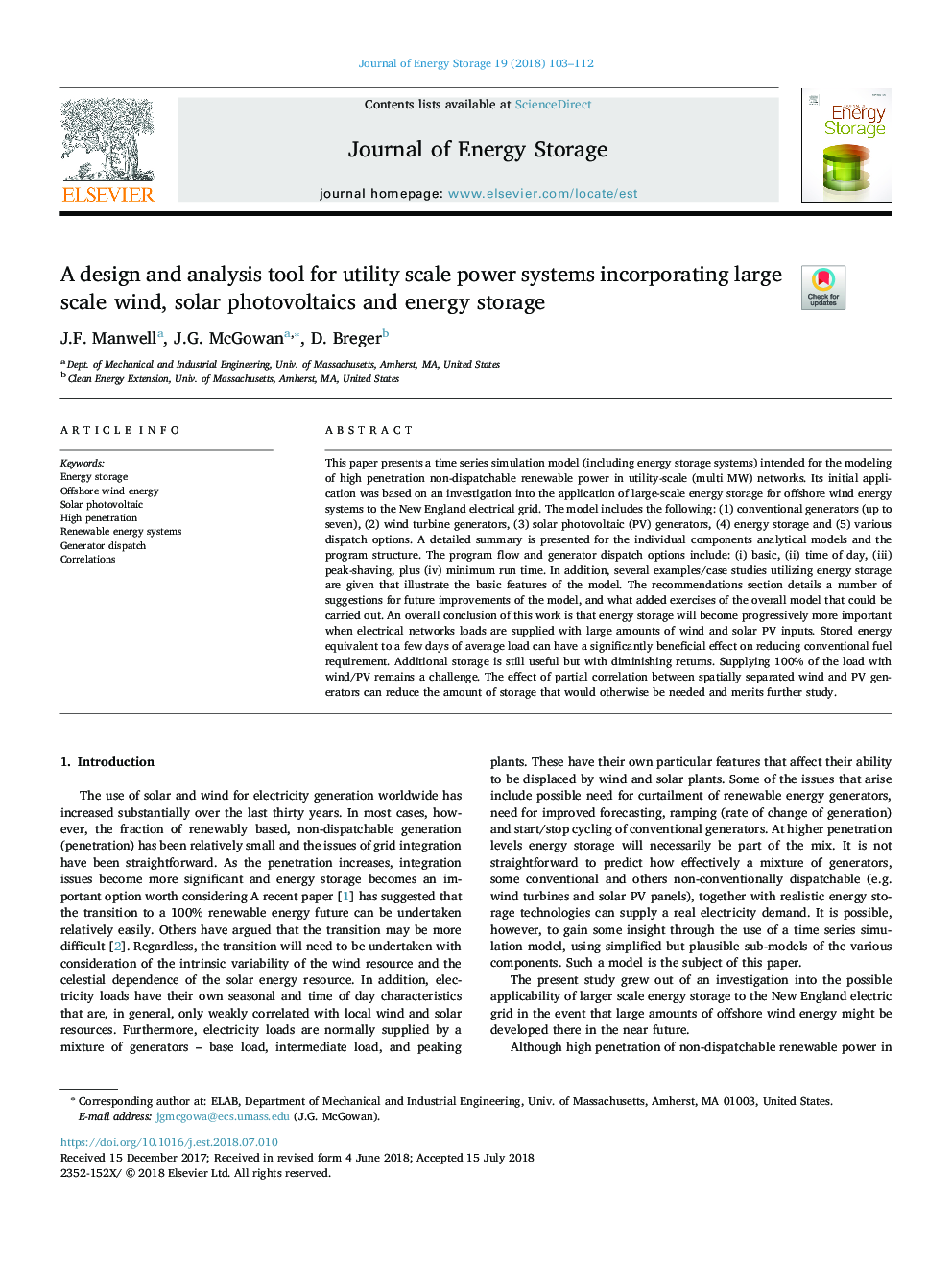| Article ID | Journal | Published Year | Pages | File Type |
|---|---|---|---|---|
| 7539568 | Journal of Energy Storage | 2018 | 10 Pages |
Abstract
This paper presents a time series simulation model (including energy storage systems) intended for the modeling of high penetration non-dispatchable renewable power in utility-scale (multi MW) networks. Its initial application was based on an investigation into the application of large-scale energy storage for offshore wind energy systems to the New England electrical grid. The model includes the following: (1) conventional generators (up to seven), (2) wind turbine generators, (3) solar photovoltaic (PV) generators, (4) energy storage and (5) various dispatch options. A detailed summary is presented for the individual components analytical models and the program structure. The program flow and generator dispatch options include: (i) basic, (ii) time of day, (iii) peak-shaving, plus (iv) minimum run time. In addition, several examples/case studies utilizing energy storage are given that illustrate the basic features of the model. The recommendations section details a number of suggestions for future improvements of the model, and what added exercises of the overall model that could be carried out. An overall conclusion of this work is that energy storage will become progressively more important when electrical networks loads are supplied with large amounts of wind and solar PV inputs. Stored energy equivalent to a few days of average load can have a significantly beneficial effect on reducing conventional fuel requirement. Additional storage is still useful but with diminishing returns. Supplying 100% of the load with wind/PV remains a challenge. The effect of partial correlation between spatially separated wind and PV generators can reduce the amount of storage that would otherwise be needed and merits further study.
Keywords
Related Topics
Physical Sciences and Engineering
Energy
Energy (General)
Authors
J.F. Manwell, J.G. McGowan, D. Breger,
